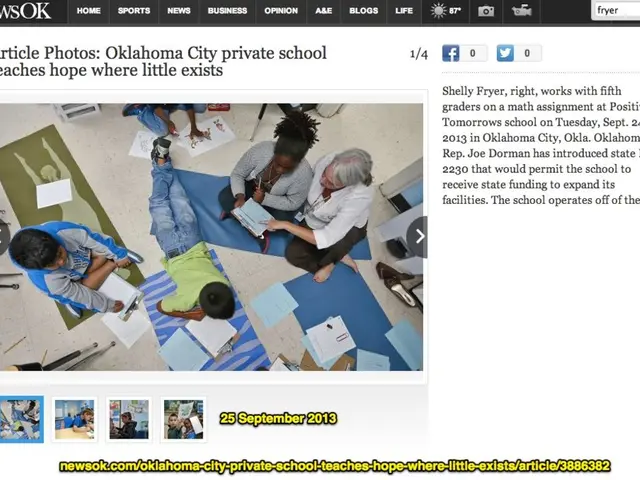Keeping the Hate Alive: Soaring Harassment Against Sinti and Roma in Hesse
Escalating Hostility and Provocation against the Sinti and Roma Community Reported - Escalation of Discrimination and Inflammatory Statements towards Sinti and Roma Communities
Let's talk about hate, shall we? It's been a rough ride for Sinti and Roma in Hesse, Germany. The number of reported cases of discrimination has seen a 40% surge, according to the Reporting Center for Anti-Gypsyism (MIA). That's a steep climb from 113 cases in 2023 to a whopping 159 in 2024. Part of the reason for this spike is heightened awareness, but that doesn't make it any less alarming.
Anti-Gypsyism, a distinct type of racism targeting Sinti and Roma or those perceived as such, has deep roots in history. Prejudices like refusal to work, nomadism, educational disparities, and loudness are nothing new.
But where does this hostility rear its ugly head most often? You might guess right—residential areas and schools.
Home Sweet Hateful Home
In residential settings, the tale is as old as time. For example, a neighbor, in a fit of rage, tossed objects out his window, almost causing injury to playing children. In another instance, a family member actually got hurt. Austere words like "Go to Auschwitz!" aren't unheard of in public places, either.
School's Out for Such Discrimination
Schools can be an unwelcoming place, too. Teachers, who should be pillars of knowledge and acceptance, often join in on the fun. They either make discriminatory remarks themselves or, worse, stand idly by as their students engage in hateful acts.
For instance, a girl was avoidedly excluded from a football game on a school playground, with a classmate proudly proclaiming, "Roma can't do that - they can only eat, and they're good at it." When the girl's mother voiced her concern to a teacher, she brushed it off with dismissive remarks like, "I can't do anything, your daughter just has to surprise the other children by playing football well."
This troubling trend has got MIA project leader Joachim Brenner concerned. He decries that such incidents are not just persistent but actively increasing, a development that requires immediate action. Alas, the future funding of MIA is uncertain, adding fuel to the flames of despair.
But fear not, for there's still a faint hope. MIA is pushing for the persecution history of Sinti and Roma and the structures of contemporary anti-Gypsyism to become mandatory components of school and university curriculums. By educating future generations about this dark chapter in history, we can better equip them to combat discrimination in all its forms.
A quick heads-up: There are some skewed views still lingering in schoolbooks, according to MIA. These texts need a good revision to ensure they promote inclusivity. Let's aim for a world where "Go to school" isn't an unwelcome command for Sinti and Roma children.
Oh, and about that genocide during Nazi times, it's estimated that there are 8,000 to 10,000 Sinti and Roma living in Hesse today, a number clouded by the experiences of registration during that era. The mantra "never forget" rings truer than ever.
- Discrimination
- Sinti and Roma
- Reporting Office
- Hesse
- Auschwitz
- Roma
- Sinti
- Wiesbaden
- Children
- Teacher
- Tram
- School
- Residential
- Education
- History
- included in curriculum
- The surge in reported cases of discrimination against Sinti and Roma in Hesse, as documented by the Reporting Center for Anti-Gypsyism (MIA), points towards a pressing need for policy interventions in community and employment sectors to address the issue.
- In light of the rising incidents of discrimination, it is essential to include the history of persecution of Sinti and Roma and the structures of contemporary anti-Gypsyism in school and university curriculums, as suggested by MIA, to foster a more inclusive educational environment.







